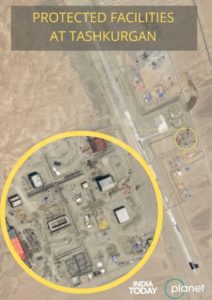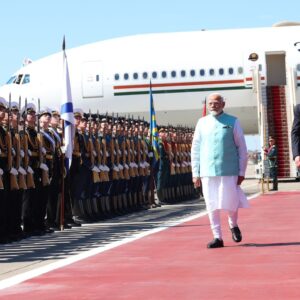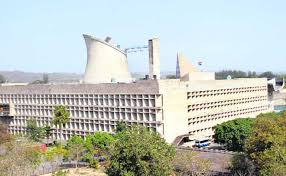
Recent satellite images suggest that the Chinese are developing protected underground facilities at the airport in Tashkurgan. Still under construction, the high-altitude airport is often touted as the future base for Chinese ambitions in Central Asia.
The proposed airport in Tashkurgan is in close proximity to the borders of Tajikistan, Afghanistan and Pakistan-Occupied Kashmir (PoK). It was in 2015 that China’s civil aviation authorities first revealed their plans to construct an airport at the high altitudes of the Pamir plateau.
However, construction at this site began only in April 2020. This was almost a week before the first scuffle between Indian and Chinese armed forces in Ladakh’s Pangong Tso was reported in May 2020.
Analysis of high-resolution commercial satellite imagery, provided by space firm Planet Labs, confirms the likely dual-use nature of the upcoming airport.
Satellite image ©️ Planet Labs Inc, Analysis India Today
“These secured underground facilities confirm the Chinese intentions in the region; the likely use of these facilities is not clear at this stage but it will provide a level of concealment and protection to the Chinese operations” Col Vinayak Bhat (Retd) said.
Satellite image ©️ Planet Labs Inc, Analysis India Today
Along with the underground facilities, construction on other parts of the air base is also visible in the satellite images dated May 28, 2021. Blacktopping of the runways and construction of the terminal area can clearly be seen in the satellite images, along with deployment of stone crushing machines, land moving equipment and construction trucks.
Satellite image ©️ Planet Labs Inc, Analysis India Today
Owing to its higher altitude, the 3,800 metre long runway in Tashkurgan is slightly longer than the Hotan airport.
THE STRATEGIC CORRIDOR
Experts believe that the strategic location of the airbase in Tashkurgan works in favor of the Chinese leadership, which has varying interests and concerns in the region.
“China is already heavily invested in Tajikistan and Pakistan. With fast changing dynamics in Afghanistan, this will be one of the strategic routes for China giving an opening into the Arabian Sea and the China Pakistan Economic Corridor (CPEC), which is part of the Belt and Road Initiative (BRI),” Col Vinayak Bhat (Retd) told India Today.
Colonel (Retd) Bhat added that China could also be concerned about the spread of Islamist movements following the rise of the Taliban, which could fuel more insurgencies in Xinjiang. Recently, China hosted a visiting Taliban delegation which held meetings with Chinese Foreign Minister Wang Yi.
“Taliban is expected to play an important role in the process of peaceful reconciliation and reconstruction in Afghanistan,” the Chinese foreign ministry said.
Reacting to the developments, Afghan Ambassador to India, Farid Mamundzay was quoted as saying, “China also suffered from terrorism and would continue to suffer if terrorist groups remain operational in Afghanistan.”
Apart from patrolling the area, the People’s Liberation Army’s (PLA) ground forces have even set up posts near the Badakhshan area of Afghanistan.
The new air base in Tashkurgan overlooks the strategic Wakhan Corridor in Afghanistan- a narrow territory that separates Tajikistan from Pakistan and PoK.
The corridor is connected to several geopolitical conflicts as described by Harvard International Review as the center of “the so-called New Great Game between Russia and China over Central Asia, the rising geopolitical contest between China and the West over the new Belt and Road initiative, and the ever-inflamed (but now ratcheted) tensions between India and Pakistan over Kashmir”.
Chinese media reports claim that the initial airport design had one terminal building, four aircraft stands, one tower, 800 square metre air traffic control building and supporting facilities such as air traffic control, fuel supply, power supply, firefighting and rescue.
Once complete, reports claim the airport will be able to accommodate 1,60,000 passengers and 400 tons of cargo every year.
However, considering the low number of Chinese tourists visiting these areas every year, the airport holds more value in terms of strategic relevance rather than as a tourist attraction. The likely date of completion of the project, according to the Chinese media reports, is sometime in the middle of 2022.




 Driving Naari Programme launched in Chandigarh
Driving Naari Programme launched in Chandigarh






























